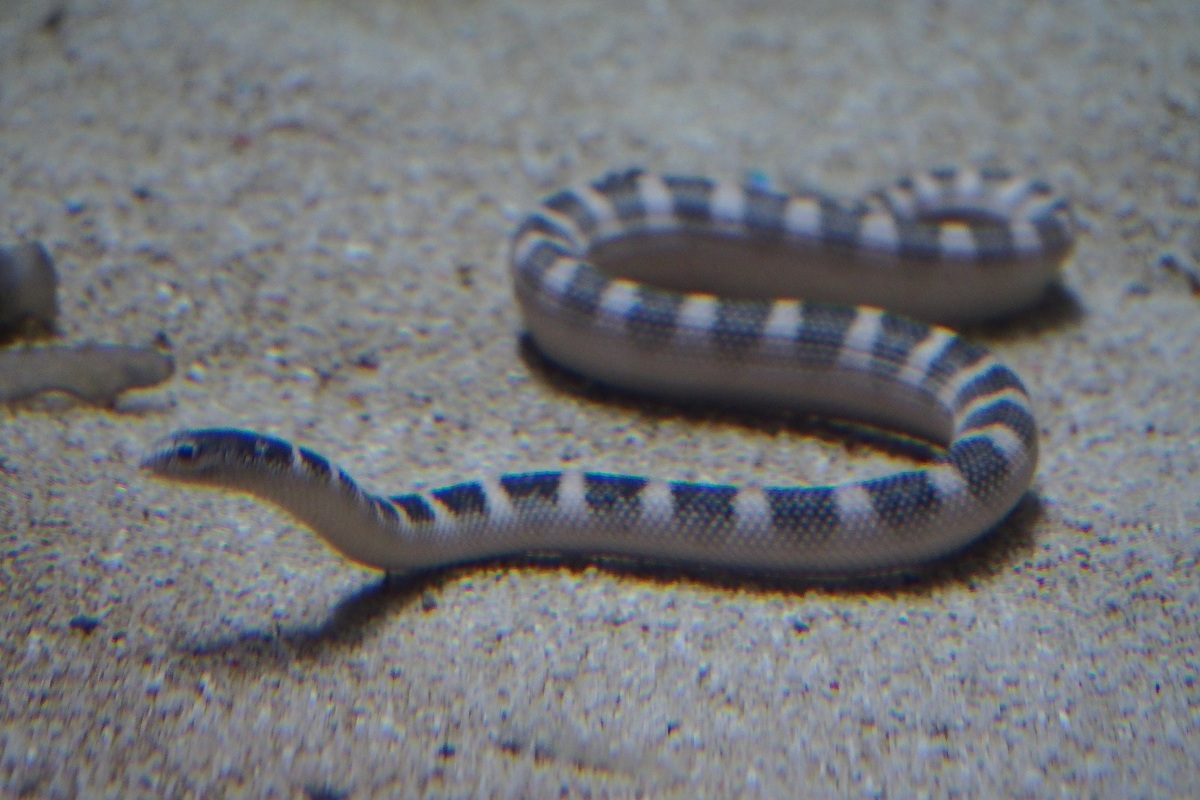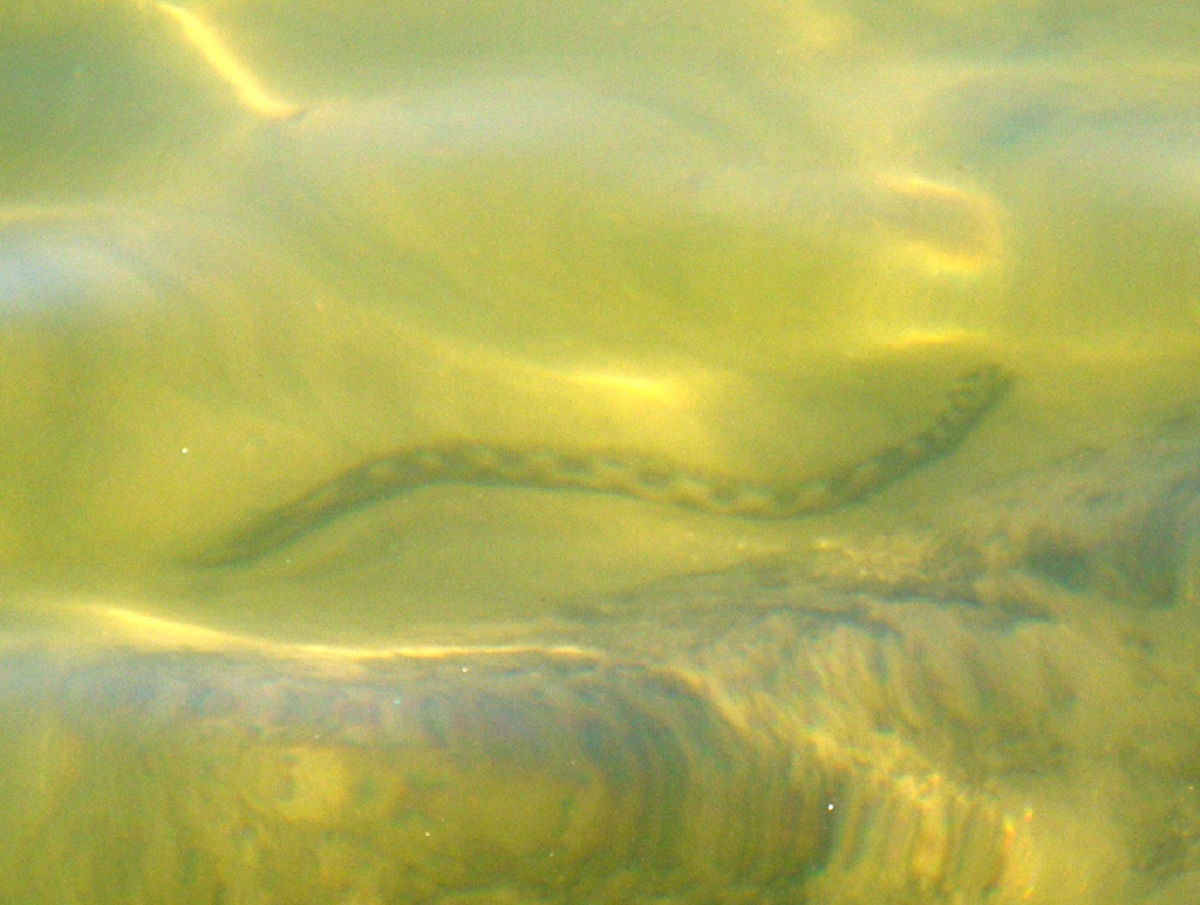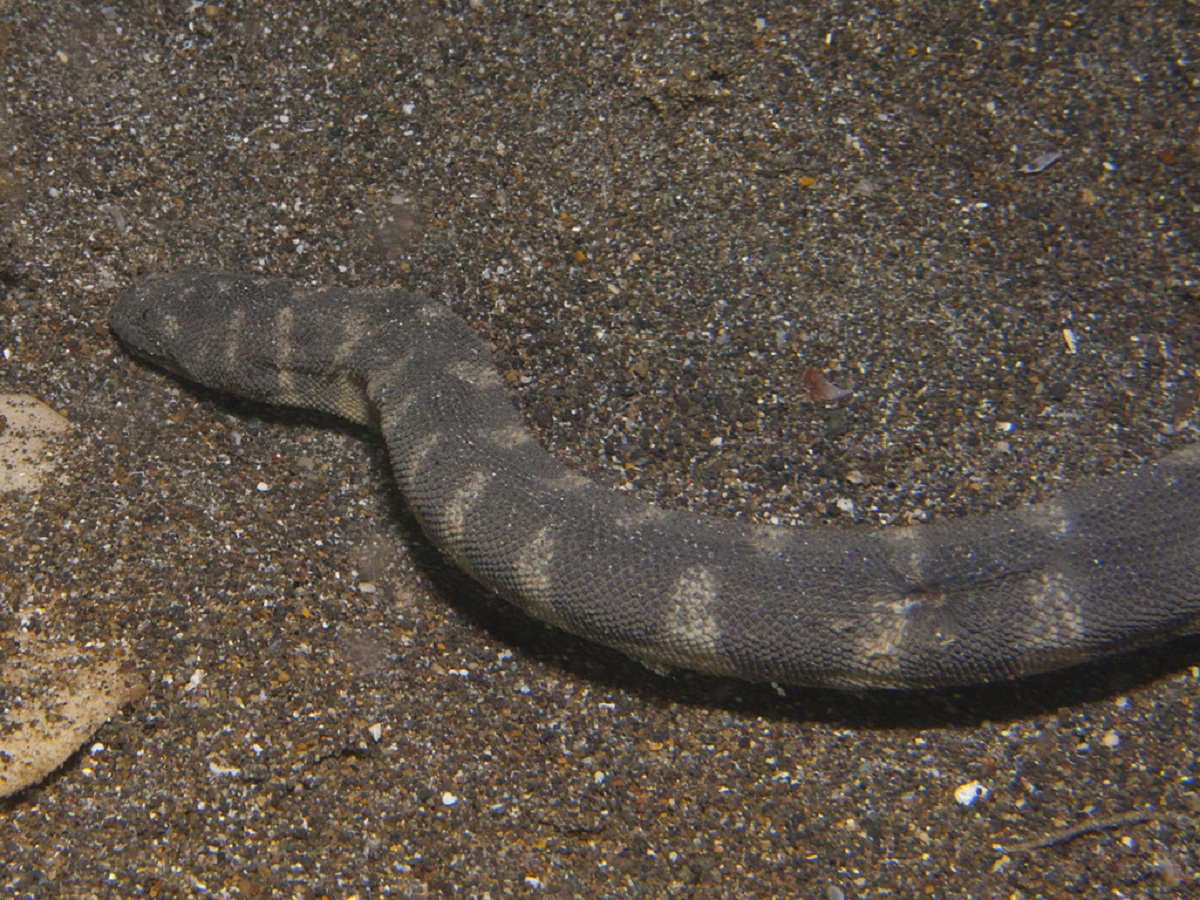
Snakes are scary due to their poison throughout the world. There are different types of snakes and the poisons each one possesses. The most poisonous snake in the world it is not a terrestrial serpent, but a marine one. It's about the Enhydrin schistosa. Although it can be compared with other species of venomous terrestrial snakes, if we compare it as a reference to the median lethal dose, this snake is the deadliest in the world.
In this article we are going to tell you about all the characteristics, feeding, reproduction and habitat of the most poisonous snake in the world.
Key features

The venom of this snake is the deadliest in the world. LD50 is the milligrams per kilogram needed to send half a group of test animals. Thanks to this dose, the most poisonous snakes in the world can be identified. It is known by the common name of the beaked sea serpent and is named for the protruding beak in its mouth that acts as a hook. It is located in the anterior part of the maxilla.
It shares similarities with other sea snakes, although it is highly adapted to underwater life. Its tail flattens into flippers for swimming. It is an animal with valve-shaped nostrils that close and warn the snake when it is underwater. They do not have enlarged scales on their abdomens, as most snakes use them to move on land.
One of the characteristics of The most poisonous snake in the world is that it reaches about 140 cm in length. That said, aside from being the most venomous snake in the world, this snake is also quite large. Its beak is very strong, vertically flattened, and it has a relatively small headrest on its body.
Your skin color will change based on your current age. Adults are usually olive green or light greenish gray above and white below. At this stage of life, they have other black lateral bands, which are located near the tail. Its criss-cross straps are wider at the bottom of the body and narrower at various points near the sides. The most normal thing is that these crossed bands disappear as they grow.
The threat of the most poisonous snake in the world

Although it is the most venomous snake in the world, nothing is known about the conservation status of the species. Just as the conservation status of this species is not known, nor of other marine snakes, since the investigation is more complicated as it is an underwater species. Many of these snakes are used by humans to produce skin, use their organs and meat. Nevertheless, the level of threat to the mouth sea snake is completely unknown, since we do not know how many individuals are in the population.
Different events related to fishing and marine pollution also pose threats of immeasurable gravity. Other more general threats to marine ecosystems from overfishing have also been eliminated. Pollution and climate change are products of the threats to this species. A variety of factors can affect this species and its conservation status.
Humans should not approach this snake because it is easily injured. Even if this species is handled with care, it is difficult to keep in captivity.
Conservation

Although the conservation status of this species is unknown, to protect it, some governments have created regulations that prohibit and sanction anyone who uses the species for fishing. A special permit is required to trap sea snakes. While these laws work well close to land, sea snake fisheries in the Indian and Pacific oceans are not regulated due to their location in international waters.
In all these places, laws and regulations are lacking and their impact is unknown, as is the total population. Although some species are listed by the Convention on International Trade in Endangered Species (CITES), much remains to be learned about the biology and abundance of sea snakes, which are dedicated to dealing with its threats.
The most poisonous snake in the world
One of the characteristics that allows this snake to hunt in low-visibility waters is its sense of touch. This touch causes the snake to swallow its prey, head first, before releasing a powerful venom. It is important to note that most snakes in this sea rarely bite. Without a full bite, they can't inject much venom, so they're less effective. However, it is the most aggressive species that exists. Just 1,5 mg of poison is enough to kill a person. The total dose of venom it normally releases during its hunt is estimated to be enough to kill 22 people.
There are few records of human bites as they only bite and try to use poison as a means of defense. They do this when they feel threatened by a human and finally decide to attack. Most deaths from bites from these snakes occur when they come into contact with humans in shallow drains or when removed from fishing nets. This is where they are most vulnerable and will eventually attack.
As for reproduction, it has some breeding habits. It usually searches for a mate between September and October and reproduces only once a year. Females produce relatively large young that can fend for themselves.
Other very poisonous snakes
King Cobra
It is the largest poisonous snake in the world. Specimens of more than 6 m have been quantified. Its diet, oddly enough, is based on other snakes, since it is capable of swallowing them whole. Its venom is highly poisonous, more so than any other. We can find it in China, Vietnam and most of the Asian continent.
Black mamba
Usually does not attack unless cornered and threatened. It is not the deadliest by any means, but its poison is very dangerous. Even so, it is considered one of the deadliest snakes in existence as it is one of the deadliest African snakes on humans. The poison it releases is said to kill 10 people in one bite.
I hope that with this information you can learn more about the most poisonous snake in the world and its characteristics.